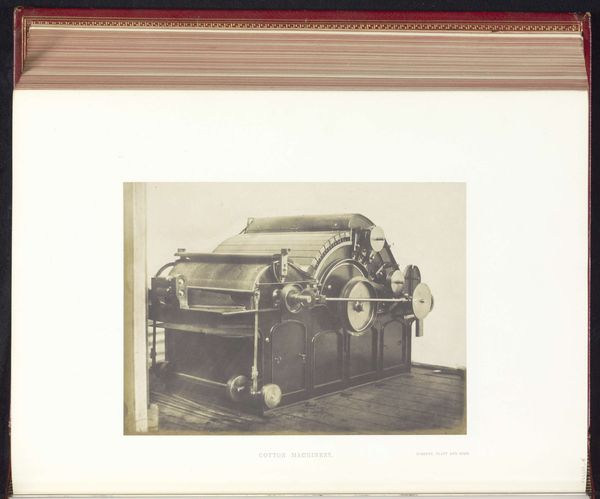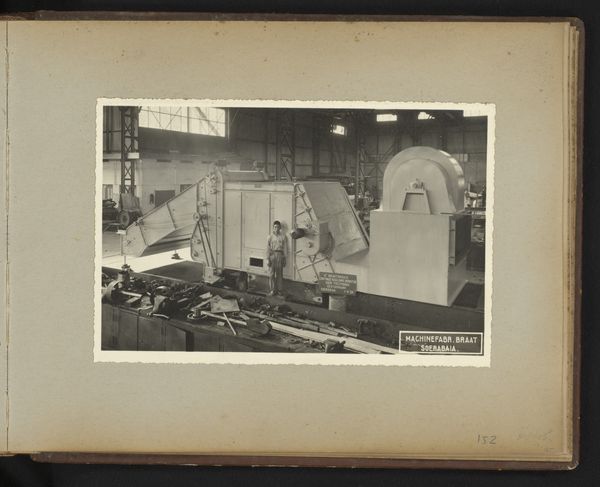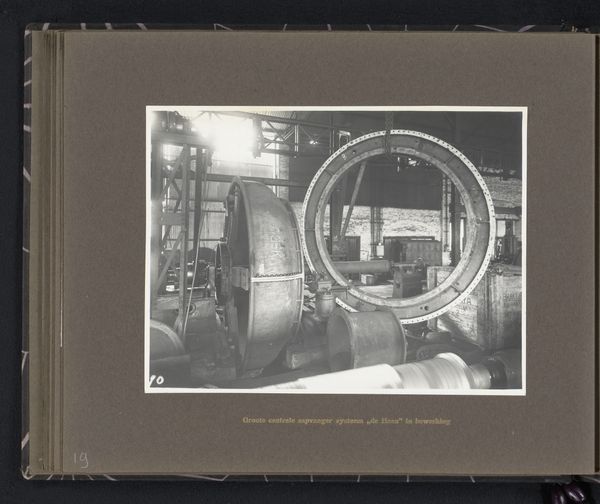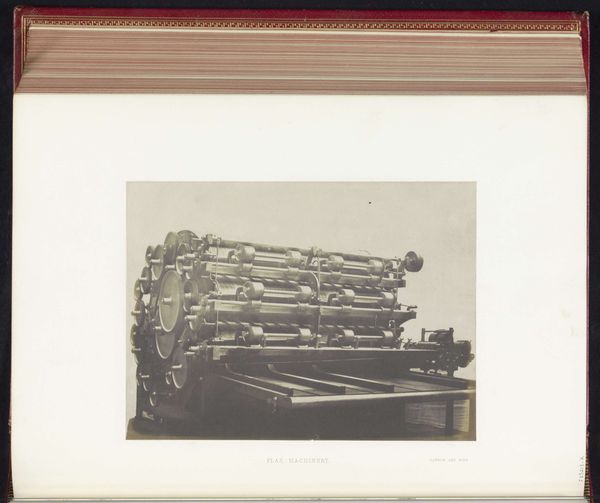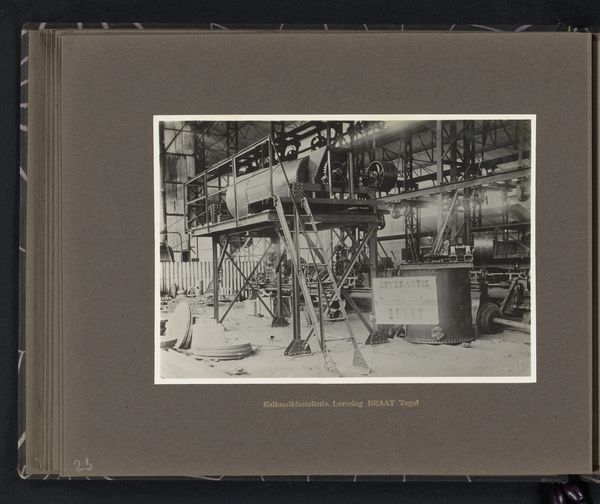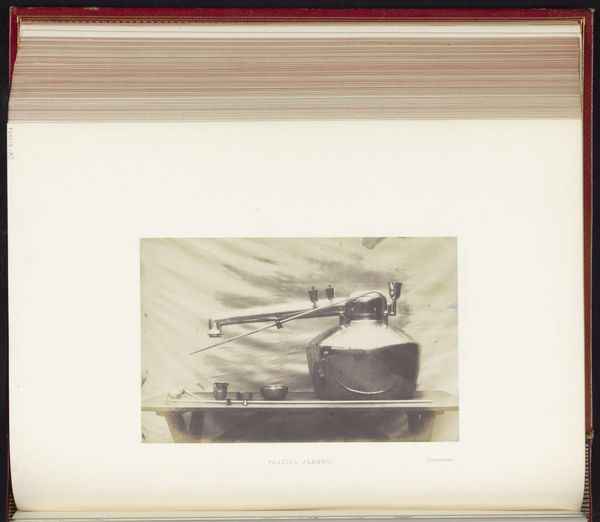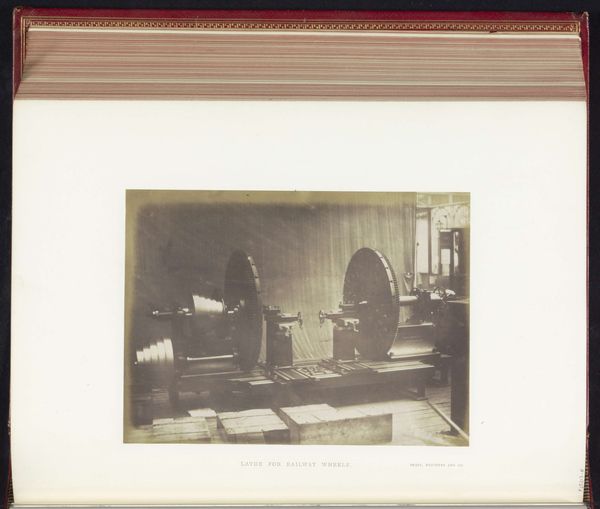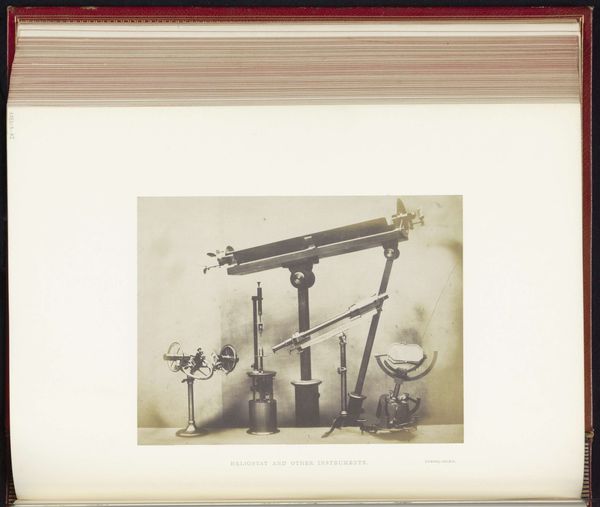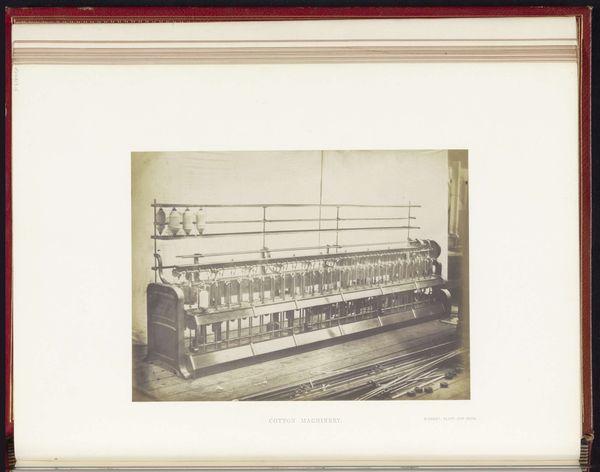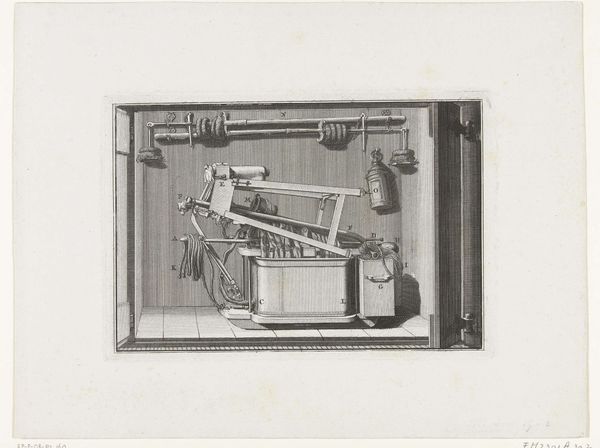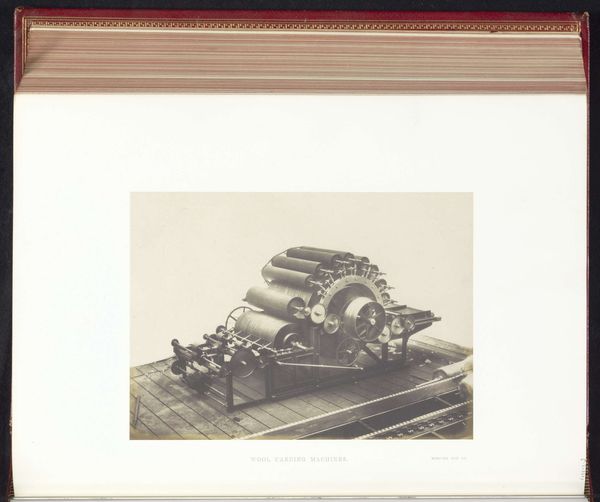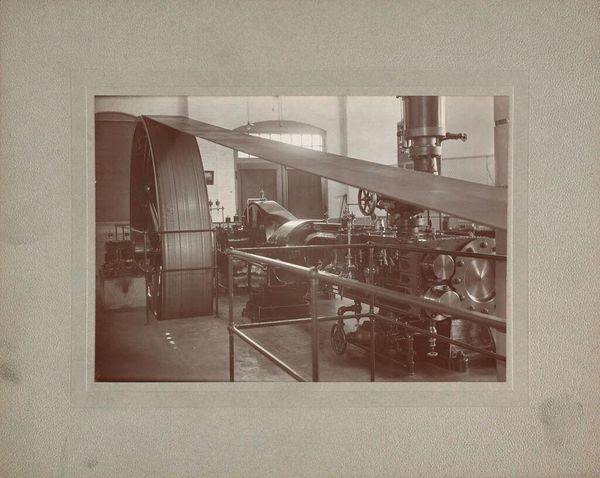
Elektrisch gereedschap van Whitworth and Co op de Great Exhibition of the Works of Industry of All Nations van 1851 in het Crystal Palace in Londen 1851
0:00
0:00
print, photography
# print
#
photography
#
coloured pencil
Dimensions: height 156 mm, width 216 mm
Copyright: Rijks Museum: Open Domain
Editor: So, here we have "Elektrisch gereedschap van Whitworth and Co op de Great Exhibition of the Works of Industry of All Nations van 1851 in het Crystal Palace in Londen," which translates to "Electrical tools by Whitworth and Co at the Great Exhibition…" captured as a print and what looks like early photography. The subject matter feels quite novel for art. What strikes you most about it? Curator: Immediately, it’s the convergence of industry, public spectacle, and the burgeoning field of photography that captures my attention. This wasn't just about displaying tools; it was about showcasing Britain's industrial might and projecting an image of progress and innovation to a global audience. Who was this imagery meant to impress and what socio-political agendas are at play? Editor: That's a really insightful point! The “Great Exhibition" aspect really casts a different light on it. Was photography often used in this way, as a record of industrial achievement? Curator: Precisely! Early photography served as a powerful tool for documenting and promoting industrial advancements. This image immortalized the cutting edge machinery, legitimizing claims of British technological supremacy but who controlled the narrative? Were voices of workers or critics considered? Editor: It’s fascinating to consider photography not just as art, but as a piece of a larger political and economic narrative. I had initially only looked at it at face value. Curator: It's crucial to recognize that art, especially public art like exhibition displays, always operates within specific social and institutional contexts, advancing particular ideologies and values. Thinking about it through this lens makes it richer, no? Editor: Definitely. I'll look at photography, and especially these early photographs, quite differently now. It’s been quite illuminating to hear the historical perspective! Curator: And for me, your fresh eyes remind us not to take these narratives for granted and to question who is shaping history through these images.
Comments
No comments
Be the first to comment and join the conversation on the ultimate creative platform.
